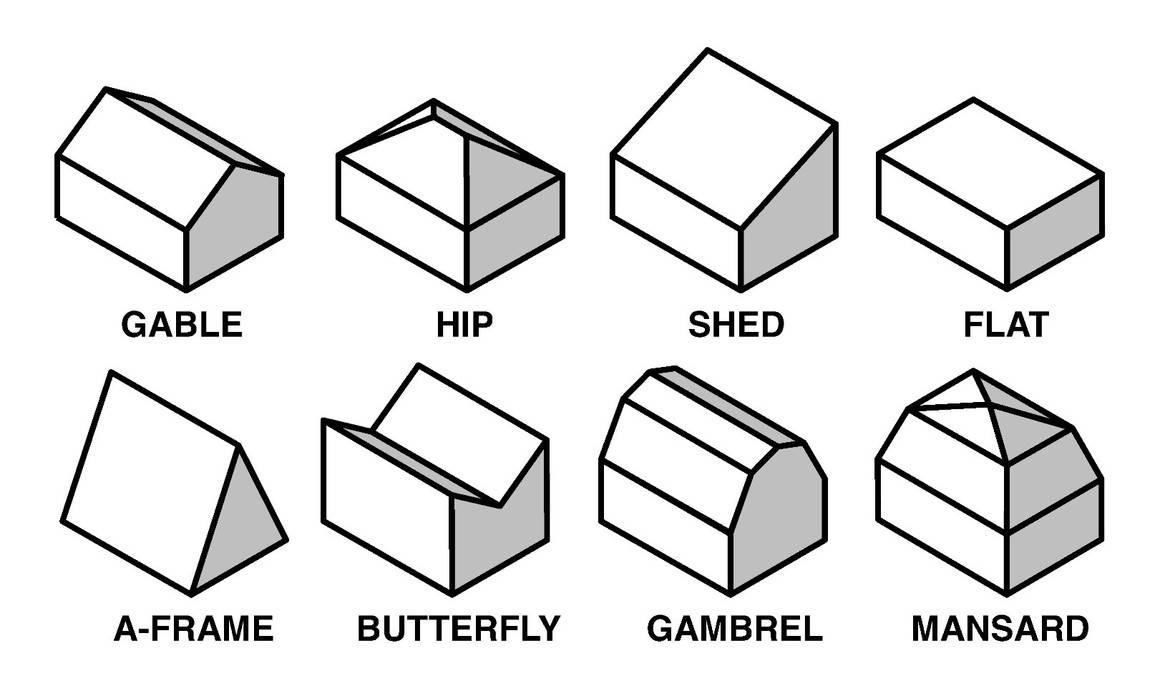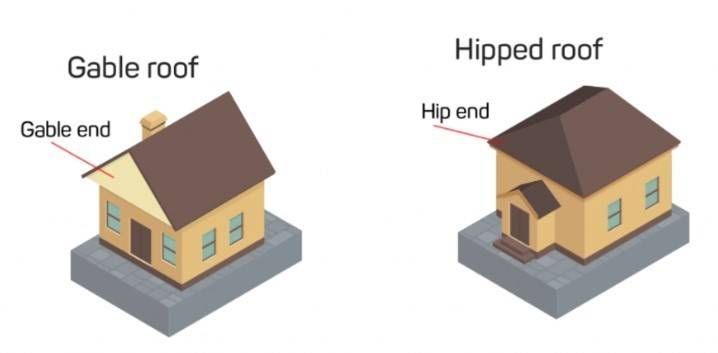Roofs are not only functional components of buildings but also contribute to architectural aesthetics. The pitch or slope of a roof plays a significant role in defining its style, adaptability to various climates, and regional influences. This article delves into the diverse world of roof pitches, exploring their characteristics, regional peculiarities, and interesting facts.
Exploring the World of Roof Pitches: Styles, Features, and Regional Influences

Gable Roof (Steep or Pointed)
The Gable roof is one of the most common and recognizable roof styles worldwide. It is characterized by two sloping sides that meet at a central ridge, creating a classic triangular shape. The pitch of the roof can vary, with steeper slopes being common in areas with heavy snowfall, allowing for effective snow shedding. This style is versatile and can adapt to different architectural forms, making it popular in both traditional and contemporary homes.
One notable advantage is its excellent ventilation and attic space. The steep slope allows for the rise of warm air, which can be expelled through gable vents, promoting better airflow and reducing moisture buildup. Furthermore, the construction and maintenance are relatively straightforward, contributing to their wide popularity.
Gable roofs began to be primarily prevalent in European countries, particularly in Germany, Switzerland, Austria, and other Central European regions with a Germanic influence. Their slopes harmonize with the idyllic landscapes, and this style has become a symbol of traditional architecture in these regions.

Mansard Roof (French Roof)
The Mansard roof, also known as the French roof, is characterized by a double slope. The lower slope is steeper than the upper slope, allowing for expanded space in the attic, which can be utilized for additional living areas or storage. This style gained popularity during the French Renaissance and is still associated with elegant French architecture.
Mansard roofs offer the advantage of increased usable space. The nearly vertical lower slope allows for the use of full-sized windows or dormers, maximizing natural light and creating a visually appealing appearance. The upper slope of Mansard roofs can have varying pitches, contributing to design flexibility. However, complex construction and multiple slopes can result in higher costs compared to other roof styles.
Mansard roofs are common in the historical neighborhoods of Paris, such as the picturesque Montmartre district. The charm and elegance of these roofs beautifully complement the old buildings, creating an iconic silhouette of the city.

Hip Roof or Pyramid Roof
The hip roof, also known as the pyramid roof, features slopes on all four sides, meeting at a ridge without any vertical gable ends. This design provides excellent stability and is suitable for areas with strong winds or the risk of hurricanes. Hip roofs also ensure efficient water drainage, as the slopes facilitate easy runoff of rainwater. The design can vary, with some roofs having equal slopes on all sides, while others have steeper pitches on shorter sides.
The stability and durability of hip roofs make them a practical choice for various architectural styles. They can be found in both traditional and contemporary forms, adapting to different cultural influences. Additionally, hip roofs have an aesthetically pleasing and balanced appearance, contributing to their popularity.
Hip roofs are prevalent in traditional Japanese architecture, known as "irimoya" roofs. They harmonize well with the simple and elegant style of Japanese homes, and the gentle slopes of these roofs blend with the natural surroundings, creating a sense of tranquility.


Mono-Pitched Roof
One of the main advantages of mono-pitch roofs is their aesthetic appeal. Their simple and clean lines provide a modern look that integrates well into urban environments. Furthermore, mono-pitch roofs offer excellent opportunities for architectural interest. Different materials and colors can be used to create a look that suits the surroundings and personal style.
In addition to the aesthetic advantages, mono-pitch roofs are also functional. Their pitch allows for easy drainage of rainwater and melted snow. This style is suitable for climates with low precipitation. Mono-pitch roofs also provide excellent possibilities for installing solar panels, as the sloping surface is ideal for harnessing solar energy. This enables more energy-efficient construction and reduces energy consumption costs.
Mono-pitch roofs are versatile and can be used for individual residential houses as well as commercial buildings. Their simple design allows for efficient use of space and adaptation to various functional needs. Additionally, mono-pitch roofs are relatively easy to construct and maintain, contributing to their popularity.

Additional Recognizable Roof Styles
Butterfly Roof
This unique style resembles the wings of a butterfly in flight. It features two roof surfaces that steeply slope down from opposite sides and meet at a central valley. This distinctive design allows ample natural light to penetrate the spaces between the roof surfaces. Butterfly roofs are popular in contemporary and environmentally friendly architecture, emphasizing a connection with nature and optimizing energy efficiency.

Gambrel Roof
The Gambrel roof is reminiscent of traditional Scandinavian roofs and later became associated with the characteristic American barn roof. It has two distinct slopes on each side. The lower slope has a steep pitch, while the upper slope has a gentler slope. This style provides additional space in the attic, similar to a mansard roof. Gambrel roofs are often associated with Dutch or colonial architectural heritage and can be found in historical buildings across various regions.

Conclusion
Roof pitches play a significant role in determining architectural identity, adaptability to climate conditions, and cultural heritage in different regions. From the versatility of Gable roofs to the elegance of Mansard roofs and the simplicity of mono-pitch roofs, each style has its unique characteristics, peculiarities, and considerations. Exploring the world of roof pitches allows us to appreciate the rich diversity of architectural forms and practical considerations that shape them.
Writer:
Žan Križnar, an architect





